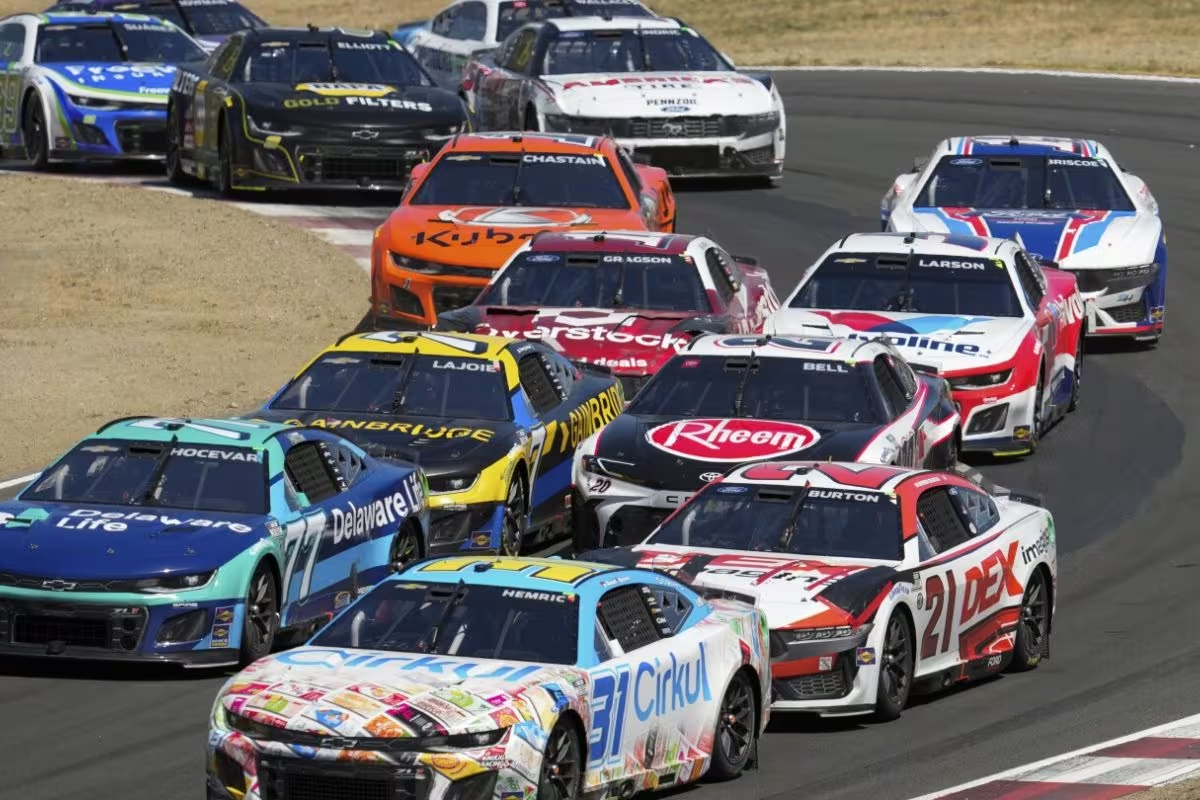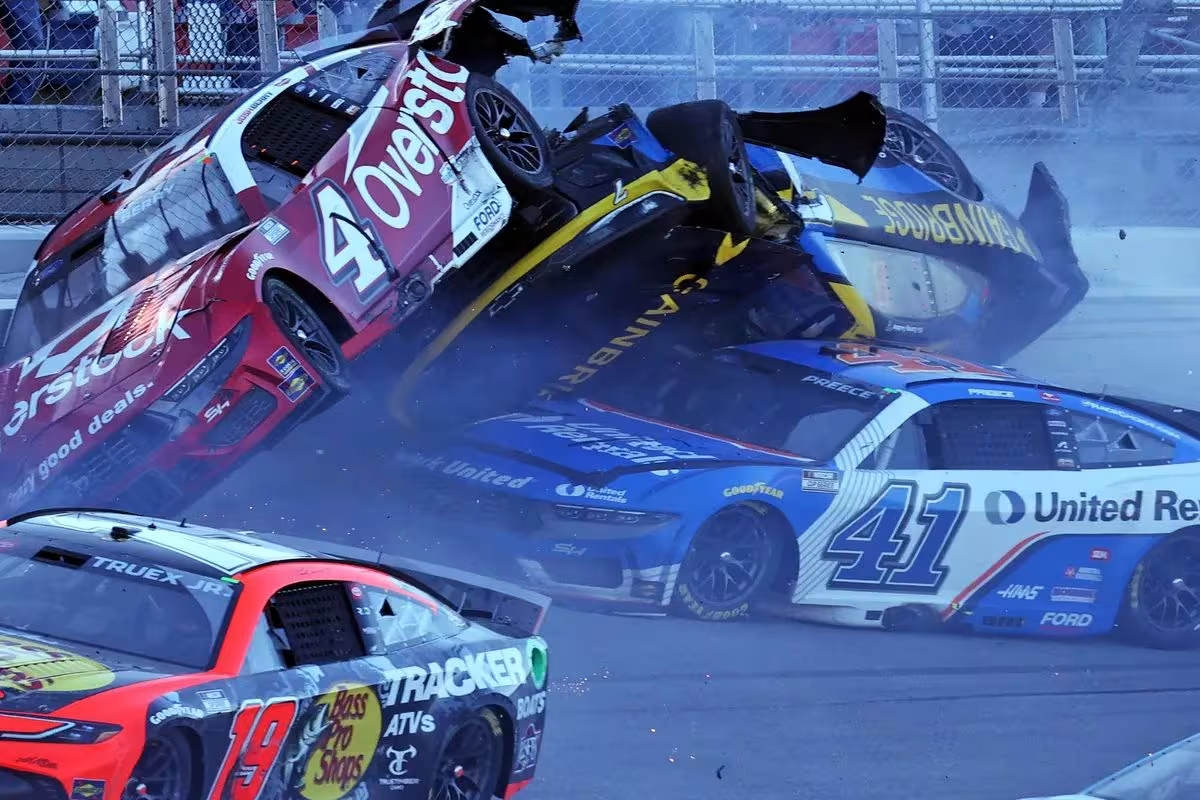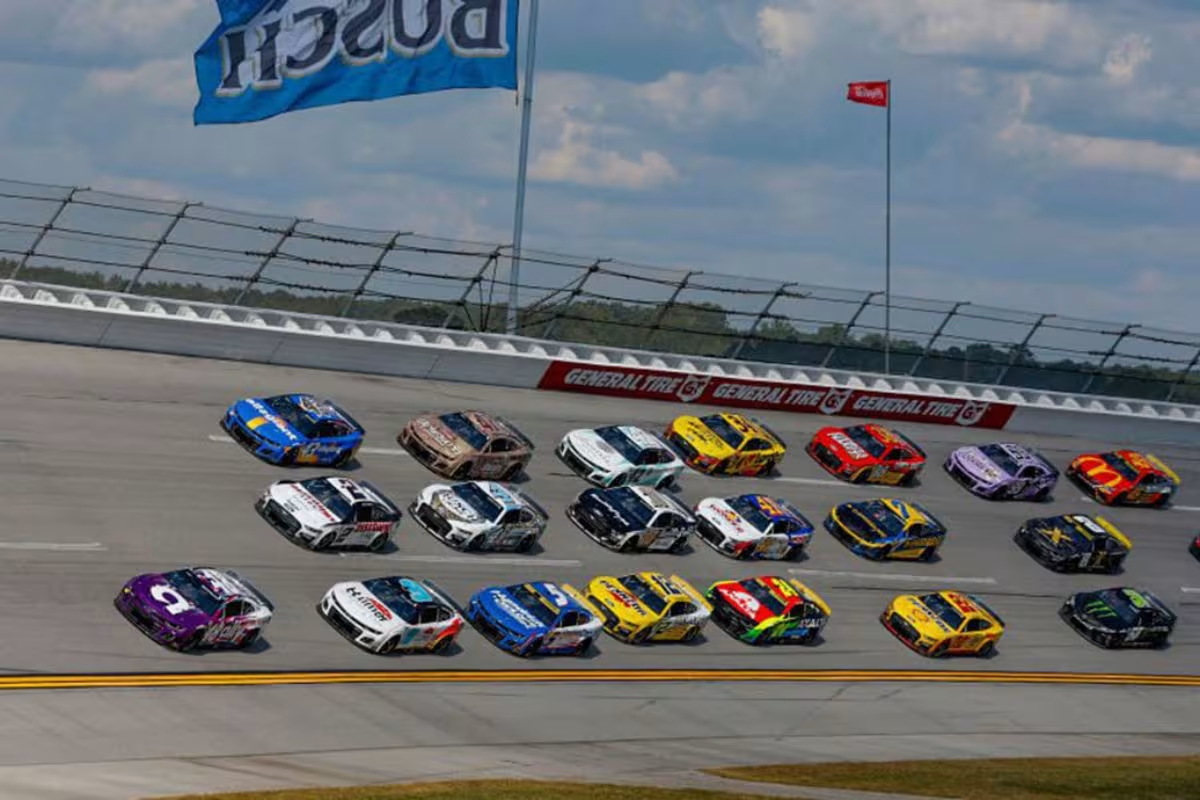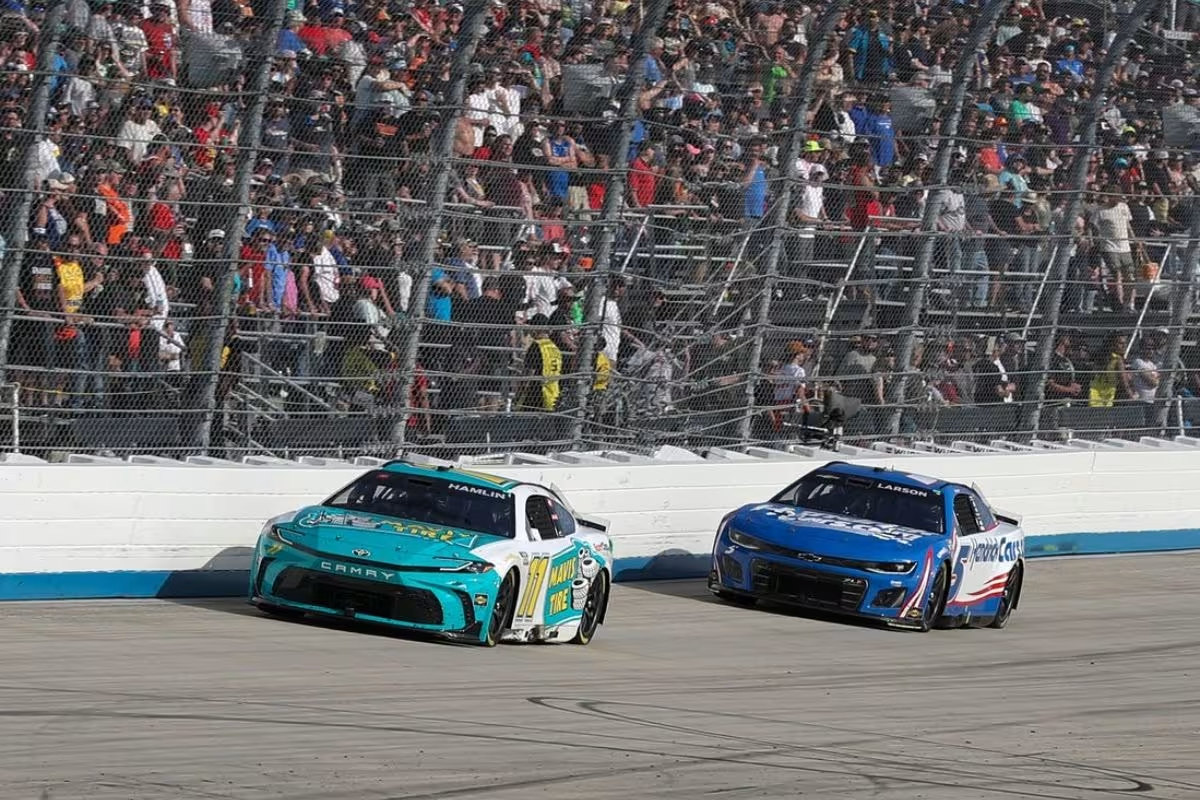Elton Sawyer Ignores Officiating Issue: The recent Talladega Superspeedway incident, a massive 28-car pileup, exposes notable shortcomings in NASCAR’s officiating protocols. Key drivers like Chase Briscoe and Chase Elliott faced confusion regarding their ability to return post-collision. Additionally, the management of the red flag situation caused considerable unfairness, as some teams gained an advantage while others waited unnecessarily. NASCAR officials acknowledge these issues and express a commitment to continuous improvement.
Key Highlights
- The “Big One” crash at Talladega Superspeedway involved 27 cars and exposed significant officiating inconsistencies in NASCAR’s rule enforcement.
- Chase Briscoe and Chase Elliott were allowed to return despite initial damage, raising concerns about selective enforcement of rules.
- Confusion surrounded the red flag management, leading to unfair advantages for teams on pit road compared to those behind the pace car.
- Officials acknowledged the need for clarity in race management to restore trust and ensure competitive integrity among teams.
- Continuous improvement in officiating protocols is crucial to addressing past errors and enhancing the quality of competition.
Overview of the Incident
The chaotic scene at Talladega Superspeedway during the NASCAR Cup Series event brought to light considerable concerns regarding officiating and safety protocols. The incident, commonly referred to as the “Big One,” unfolded with five laps remaining in regulation time, resulting in an unprecedented 28-car pileup on the backstretch.
As the wreckage unfolded, several key drivers, including playoff contenders Chase Briscoe and Chase Elliott, found themselves unable to return to the race due to extensive damage. The decision to tow these cars back to pit road sparked confusion and frustration among teams and fans alike.
However, the delayed response and unclear communication regarding the towing of damaged vehicles reflected inadequacies in NASCAR’s existing protocols. The aftermath of the incident prompts a reevaluation of safety measures and officiating strategies.

Rule Enforcement Concerns
Following the substantial crash at Talladega, questions regarding the enforcement of NASCAR’s rules have come to the forefront. The incident raised important concerns about the consistency and application of regulations.
Both Chase Briscoe and Chase Elliott, after being involved in the crash, were able to return to the pits and continue racing, despite their initial inability to drive their vehicles back under their power.
IT'S NOT JUST A BIG ONE. IT'S THE HUGE ONE!
Nearly the entire field involved in this crash at Talladega! #NASCAR
📺 : NBC pic.twitter.com/poJkMCPuIn
— NASCAR on NBC (@NASCARonNBC) October 6, 2024
Issues with the Red Flag
Red flag situations in NASCAR can greatly impact race dynamics, as evidenced by the recent incident at Talladega. One of the pivotal issues that arose was the management of the red flag and the subsequent shift to yellow. Once the red flag was lifted, the pace car failed to start rolling the field promptly, leaving some competitors in a state of uncertainty.
“We’ve got to get that cleaned up as a sport, There are teams with a lot on the line that are sitting out there just waiting on wreckers to get to them. This is my 30th year doing this, I don’t know if I’ve ever seen them turn the yellow flag on and allow guys to work on cars while other cars are just sitting there.”-(mike)
Mike Kelley, crew chief for JTG Daugherty, highlighted this inconsistency, noting that it is unacceptable for teams to be sidelined while others gain an advantage during a crucial juncture. His observation about the apparent confusion among competitors—particularly those in contention for the championship—shows the need for clarity in officiating.
“I’m sure they’ll think about that and talk about that because if you’re a guy who’s sixth in the championship hunt and you’re sitting there waiting on somebody to get to you, but the other guys are working – maybe I’m looking at it wrong and the DVP clock evens it all out – I was getting confused when Ricky kept coming by. There’s still four cars sitting here.”
“They were put in a tough situation with that many cars involved in that wreck and this many wreckers and the cars look to be damaged and in the grass. They couldn’t use the airlift system. Some guys are running it, and some guys are not, so it’s a tough situation. We’ll learn from it and get better at it, but it was a lot of new things kind of happening.”
-(mike)
The unique challenges posed by the number of damaged vehicles and the limitations of recovery resources exacerbated the situation. Without the ability to utilize the airlift system effectively, the response to the wreck further complicated the race’s management. As Kelley articulated, this incident serves as a learning opportunity for NASCAR—improvements in red flag protocols are vital for maintaining competitive integrity and ensuring that all teams are treated equitably during such critical moments.
Official Response
Following a series of officiating decisions during the latest race, NASCAR’s senior vice president of competition, Elton Sawyer, took to the media to address these issues directly.
“I would prefer us not to be standing here talking about this, I want us to be talking about Ricky’s big win, talking about our playoffs, but when you’re in live sporting events and you’re in officiating that’s going to happen from time to time. We’re going to do our absolute best to clean that up and not be in it, but that’s just part of sports.”-(elton)
Sawyer expressed a clear desire to shift the narrative toward celebrating the achievements of drivers, such as Ricky Stenhouse Jr., rather than focusing on officiating errors. However, he acknowledged the reality of officiating in live sports, emphasizing that while NASCAR aims to mitigate mistakes, they are an unavoidable aspect of the sport.
This admission is crucial, as it highlights the importance for ongoing evaluation and adjustment within NASCAR’s officiating framework to uphold the sport’s credibility and fans’ trust.
News in Brief: Elton Sawyer Ignores Officiating Issue
The recent crash during NASCAR’s Cup Series highlights considerable deficiencies in officiating and rule enforcement. The mishandling of the red flag and subsequent decision-making processes have raised critical questions regarding the integrity of race management. These incidents not only jeopardize driver safety but also undermine the credibility of the sport. Addressing these officiating errors is imperative to restore confidence among participants and fans alike, ensuring that such oversights do not recur in future events.
ALSO READ: YellaWood 500 2024 4-Way Wide Start: NASCAR Drivers Go All Out for Victory



